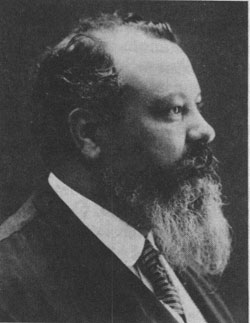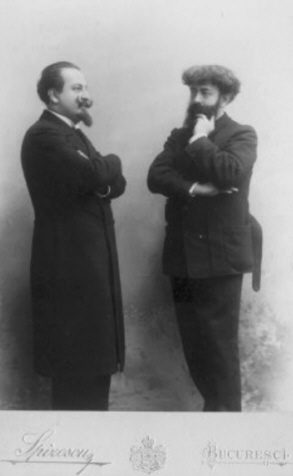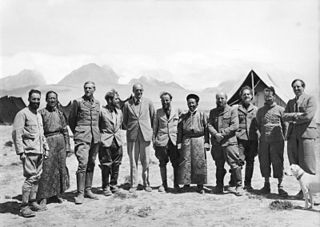Related Research Articles

The Thule Society, originally the Studiengruppe für germanisches Altertum, was a German occultist and Völkisch group founded in Munich shortly after World War I, named after a mythical northern country in Greek legend. The society is notable chiefly as the organization that sponsored the Deutsche Arbeiterpartei, which was later reorganized by Adolf Hitler into the National Socialist German Workers' Party. According to Hitler biographer Ian Kershaw, the organization's "membership list ... reads like a Who's Who of early Nazi sympathizers and leading figures in Munich", including Rudolf Hess, Alfred Rosenberg, Hans Frank, Julius Lehmann, Gottfried Feder, Dietrich Eckart, and Karl Harrer.

The Major Arcana are the named or numbered cards in a cartomantic tarot pack, the name being originally given by occultists to the trump cards of a normal tarot pack used for playing card games. There are usually 22 such cards in a standard 78-card pack, typically numbered from 0 to 21. The name is not used by tarot card game players.

Alice Ann Bailey was a writer of more than twenty-four books on theosophical subjects, and was one of the first writers to use the term New Age. Bailey was born as Alice La Trobe-Bateman, in Manchester, England. She moved to the United States in 1907, where she spent most of her life as a writer and teacher.

Nephilim is a role-playing game about powerful elemental entities reincarnating into human beings. The players take the roles of these beings as they adapt to their newly symbiotic existence and learn the secrets hidden behind veils of obscurity and mysticism, seeking the path toward enlightenment, Agartha. The game contains much symbolism, primarily related to the Hermetic tradition.

Lobsang Rampa was the pen name of Cyril Henry Hoskin, an author who wrote books with paranormal and occult themes. His best known work is The Third Eye, published in Britain in 1956.

The association of Nazism with occultism occurs in a wide range of theories, speculation, and research into the origins of Nazism and into Nazism's possible relationship with various occult traditions.

Gérard Anaclet Vincent Encausse, whose esoteric pseudonyms were Papus and Tau Vincent, was a French physician, hypnotist, and popularizer of occultism, who founded the modern Martinist Order.

Agartha is a legendary kingdom that is said to be located on the inner surface of the Earth. It is sometimes related to the belief in a hollow Earth and is a popular subject in esotericism.
Sex magic is any type of sexual activity used in magical, ritualistic or otherwise religious and spiritual pursuits. One practice of sex magic is using sexual arousal or orgasm with visualization of a desired result. A premise posited by sex magicians is the concept that sexual energy is a potent force that can be harnessed to transcend one's normally perceived reality.

Joséphin Péladan was a French novelist and Rosicrucian who later briefly joined the Martinist order led by Papus. His father was a journalist who had written on prophecies, and professed an esoteric-aesthetic form of Rosicrucianism and universalist Catholicism. He established the Salon de la Rose + Croix for painters, writers, and musicians sharing his artistic ideals, the Symbolists in particular.

Occult detective fiction is a subgenre of detective fiction that combines the tropes of the main genre with those of supernatural, fantasy and/or horror fiction. Unlike the traditional detective who investigates murder and other common crimes, the occult detective is employed in cases involving ghosts, demons, curses, magic, vampires, undead, monsters and other supernatural elements. Some occult detectives are portrayed as being psychic or in possession of other paranormal or magical powers.
Thomas Karlsson is a Swedish occult and esoteric writer, with a PhD in the History of Religions from Stockholm University. In 1989 he founded Dragon Rouge, a Left-Hand Path initiatory organisation.

The Black Dragon Society is a non-fictional Japanese secret society, also known as the Kokuryūkai, which appears in DC Comics. The publisher first used the name in 1942's All Star Comics issue #12 as Japanese saboteurs. They were created by Gardner Fox and Jack Burnley. The same name and concept was also used by several other 1940s comics publishers that were later bought out by DC. A modern reimagining of the group as ecoterrorists was presented in JLA.
Green Dragon may refer to:

The 1938–1939 German expedition to Tibet, a German scientific expedition, took place in Tibet between April 1938 and August 1939 under the leadership of the German zoologist and SS-officer Ernst Schäfer.

Tarot card reading is a form of cartomancy whereby practitioners use tarot cards to purportedly gain insight into the past, present or future. They formulate a question, then draw cards to interpret them for this end. A traditional tarot deck consists of 78 cards, which can be split into two groups, the Major Arcana and Minor Arcana. French-suited playing cards can also be used; as can any card system with suits assigned to identifiable elements.

Chi means either "a hornless dragon" or "a mountain demon" in Chinese mythology. Hornless dragons were a common motif in ancient Chinese art, and the chiwen 螭吻 was an imperial roof decoration in traditional Chinese architecture.

The Sino-Tibetan War, also known as the Second Sino-Tibetan War, was a war that began in May and June 1930 when the Tibetan Army under the 13th Dalai Lama invaded the Chinese-administered eastern Kham region, and the Yushu region in Qinghai, in a struggle over control and corvée labor in Dajin Monastery. The Tibetan Army, with support of the British, easily defeated the Sichuan army, which was focused on internal fights. Ma clique warlord Ma Bufang secretly sent a telegram to Sichuan warlord Liu Wenhui and the leader of the Republic of China, Chiang Kai-shek, suggesting a joint attack on the Tibetan forces. The Republic of China then defeated the Tibetan armies and recaptured its lost territory.
Śūraṃgamasamādhisūtra, The Concentration of Heroic Progress: An Early Mahayana Buddhist Scripture, originally titled in French as La concentration de la marche héroïque (Śūraṃgamasamādhisūtra), is a study and translation of the Śūraṅgama Samādhi Sūtra (Śgs.) by Étienne Lamotte.
With Mystics and Magicians in Tibet, translated from the French original version Mystiques et Magiciens du Tibet, is a travel account of Tibetan religion and mystical practices written by Alexandra David-Néel. It is an account of David-Néel's experiences during her journey in the Himalayas, living among religious Buddhist authorities, monks, and mystics. The author gathered stories of her encounter with, mainly Buddhist, religious masters and entities while traveling in the region of India, Sikkim, Nepal, Bhutan, China, Japan, and particularly Tibet. The book was firstly published in 1929 in France and was later translated into different languages including English. The English translation was first published in 1931. The book contains an introduction written by Jaques-Arsène D'Arsonval.
References
- ↑ Lachman, Gary (2003). Turn Off Your Mind: The Mystic Sixties and the Dark Side of the Age of Aquarius. The Disinformation Company. ISBN 0-9713942-3-7 . Retrieved 12 May 2010.
- ↑ Жак Бержье, Луи Повель
- 1 2 "The seven heads of the Green Dragon" (about "Les Sept têtes du Dragon Vert" book by Teddy Legrand)
- ↑ Hitler et les sociétés secrètes : Enquête sur les sources occultes du nazisme
- ↑ Михаил Бурлешин «Зелёный Дракон Тибета»